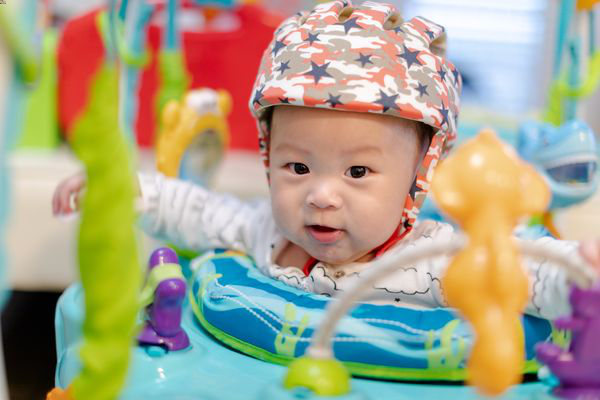Flat Spots and the Shape of Your Baby’s Head
 When a baby is born, the birth process often causes his or her head to have an irregular shape. Rest assured that a normal shape usually returns within a few weeks. In the first few months of life, however, some babies develop a lasting flat spot on one side of the head or the back of the head.
When a baby is born, the birth process often causes his or her head to have an irregular shape. Rest assured that a normal shape usually returns within a few weeks. In the first few months of life, however, some babies develop a lasting flat spot on one side of the head or the back of the head.
CAUSES OF FLAT SPOTS
The skull flattens when a baby’s head stays in one position for long periods of time. Factors that may increase this risk include muscular torticollis, early birth (prematurity) and back sleeping. Babies who sleep on their back or in a car seat without changing positions for long periods of time can develop flat heads, a condition called plagiocephaly. It is important to note that the American Academy of Pediatrics recommends that babies sleep on their back to reduce the risk for SIDS. Young babies who can’t roll over or move on their own should not be placed on their belly to sleep.
PREVENTION
There are steps parents and caregivers can take to try to avoid flat spots on an infant’s head:
- Parents should still place babies on their back for sleep.
- When babies are awake, put them on their tummy for a while. This eases pressure on the back of the head and helps babies build shoulder and neck strength.
- Relieve pressure on the back of the head when you lay an infant down for sleep by propping the child slightly to one side. Alternate sides nightly.
- Alternate which direction you place your child in the crib each night. Your child will then alternate which direction he or she looks out of the crib.
- Minimize the use of car seats when not traveling in the car, as well as other types of seats such as bouncers and swings, in which babies are positioned on their backs.
- Pick up the child often. The more time the baby is held in your arms, the less time he or she is lying down with pressure to the head.
TUMMY TIME
“To help prevent plagiocephaly, let your baby have some tummy time while you are watching them,” says Dr. Michael Muhonen, CHOC neurosurgeon. “You can also lessen the time your baby spends in one position in car seats and baby carriers. Hold your baby often, giving them time to be upright.”
The AAP mentions these suggestions to make tummy time fun for babies:
- With your baby on their tummy, place a favorite toy just a bit out of reach to encourage them to stretch for it.
- Surround your baby with a circle of toys to encourage strengthening muscles by reaching in different directions.
- Once your baby is old enough, place them belly-down on your chest, so they will pick up their head to look at your face.
- Encourage other young children to play with your baby during tummy time, as long as you carefully supervise them together.
TREATMENT
Your doctor will check your baby’s head regularly. If you or your doctor notices any problems with the shape, the doctor will feel your child’s head, particularly along the suture lines, and take measurements. A pediatric orthotic specialist can also perform a laser analysis of the head shape. Treatment of plagiocephaly will depend on your baby’s symptoms and on how severe the condition is. In most cases, frequent repositioning away from the flat side of the head will quickly correct plagiocephaly.
Your baby may need to wear a cranial molding helmet if the problem is moderate to severe and if repositioning the baby’s head has not helped. Helmets are usually made of an outer hard shell with a foam lining. Gentle pressure helps to reform the head. As the head grows, adjustments are made. The average treatment with a helmet is usually three to six months. This will depend on the age of the baby and the severity of the condition.
CRANIOSYNOSTOSIS
It is important to make sure that an irregularly shaped head is not a less common condition known as craniosynostosis. In this condition, the skull plates close prematurely, and the infant typically requires surgery to repair the fused bones. A pediatric neurosurgeon will be able to distinguish craniosynostosis from plagiocephaly.
Parents and Preemies
A premature baby or preemie is born before 37 weeks of gestation. They often require hospitalization. The best way for it to grow is to have the mother's milk.
When Your Baby Needs Surgery
In this health feature, Dr. Mustafa Kabeer, a CHOC pediatric surgeon, offers advice to parents for preparing their infant for surgery.
Crawling, Walking and Hip Disorders
Orthopaedics is the field of medicine that diagnoses and treats conditions of the musculoskeletal system, including bones, joints, muscles, tendons and ligaments.
Exams at Birth
Moments after a baby is born a brief exam is conducted. The thorough exam checks the baby's head, eyes, ears, mouth, heart and hips.



















